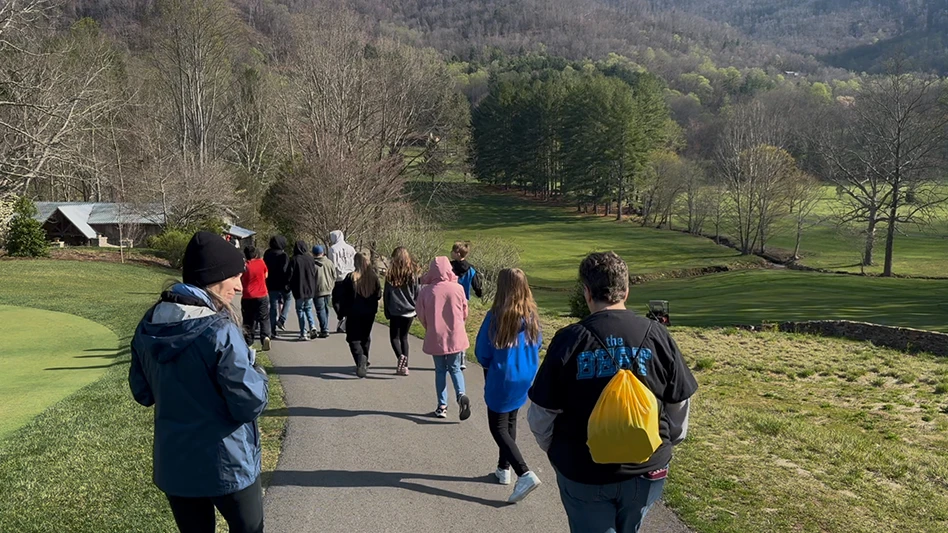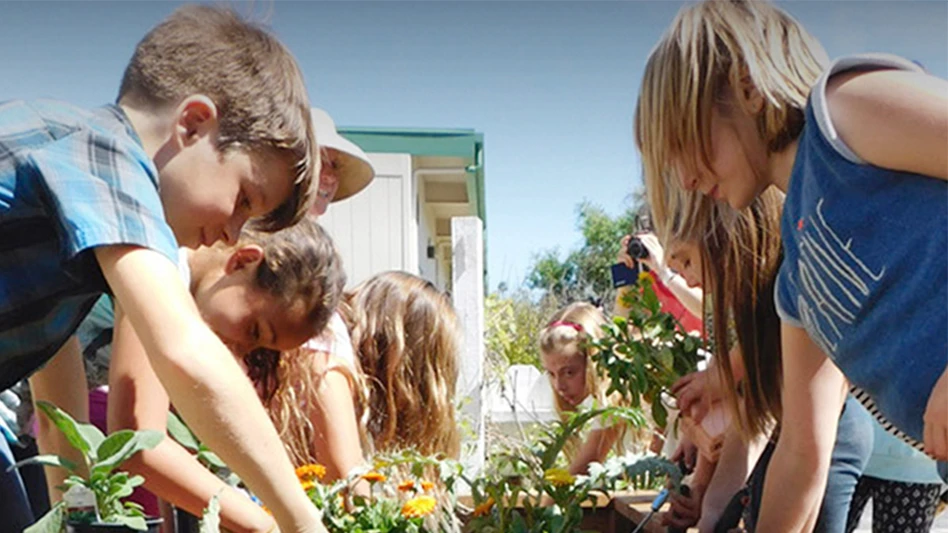|
|
If you’re remodeling greens, get the contours right. Given the big expense, most courses don’t have the financial resources for green-reconstruction mulligans. New greens must be satisfactory for at least a decade.
Most golfers will be disappointed to learn the three biggest design concerns in green contouring are drainage, drainage and drainage. Those devilish putts are a result of the designer using slopes to make water flow downhill and usually nothing more. Older courses seem more devilish, mostly because slower green speeds and less subsurface drainage allowed and demanded steeper slopes.
Greens usually need two drainage swales to minimize drainage concentration, which causes saturation and turf damage, especially in high-use areas such as the green approach and walk-on points where increased traffic magnifies poor drainage.
The swale green in the photo above is an example of the problem inherent when greens drain in one direction. A second swale would reduce the concentration of surface water.
But the drainage zones don’t have to be equal. It’s usually more artistic if the drainage splits are slightly unbalanced. Usually, one drainage swale exits on the front of the green partly to make it visible and assist holding shots. The second swale should drain somewhere to the downhill side. It’s preferable both swales drain away from the cart-path side. It’s possible to drain greens against the natural slope, but they usually look awkward and make it difficult to read putts, which some consider a design benefit in limited doses.
A bigger problem is relying on catch basins near the green for drainage. Catch basins aren’t as reliable as surface flow because they can become clogged.
Another maintenance criterion is providing enough cupping space. There are many systems for rotating the cup around to distribute wear, but old cup locations – including the 3-foot radius around it – heal in about three weeks. That system type requires at least 21 locations.
After allowances for cupping areas, minimum distance from cup to green edge, collars and the general oval shape of the green, etc., minimum green size (based on the width of eight 6-foot-wide pin diameters and the length of 13 six-foot diameters) is about 48 feet by 78 feet or about 3,000 square feet. That’s if all the area is flat enough to set a pin, which usually isn’t the case. Most greens are about 6,000 square feet and allow interesting interior transition contours where a cup would never be set.
Steeper contours – ridges as high as two feet and 10- to 15-percent slopes – are fine on green perimeters, where pins are never set, and give the appearance of greater contour without reducing cupping space. If those rolling edges get too steep, they dry out, especially when facing strong prevailing winds. Turning mowers and major exit points add stress, which inevitably leads to turf damage and limits the placement and height of dramatic rolls.
Forty-eight feet is the narrowest practical dimension anywhere on a green. Where greens are narrower, there isn’t enough room to move the pin around, which concentrates foot traffic in the middle of the green. Green edges with outside curve diameters broader than 48 feet reduce mowing damage from tight turns.
Another maintenance criterion is providing acceptable cupping areas. Modern green speeds have reduced green slopes acceptable for setting pins. Lately, people have been lobbying for reduced green speeds, even though many clubs demand faster green speeds. Some combinations of turf and microclimate require a life support system to adequately maintain greens at desired speeds.
Many ask architects to lobby for lower green speeds, but my job is to provide golf courses that meet the needs of today’s golfer, not dictate what they should want. Even though I favor steeper green slopes for their aesthetics, I’m designing flatter greens because form follows function.
Until the 1950s, 6-percent green contours were common. They flattened out to 4 percent in the ’60s, 3 percent in the ’70s, 2.5 percent in ’80s, 2.25 percent in the ’90s and 2 percent or less currently. Some research suggests that with green speeds of 10 on the Stimpmeter, 3-percent slopes are the maximum allowable for pin areas to avoid putts that, as H.S. Colt once wrote, “run from the putter like a swine possessed by the devil.”
Major tournaments will set cups on slopes as much 4 percent, which might work even on extremely fast greens for pros, but I’m sure most country club golfers would struggle. I’ll never build pin area greater than 3 percent, assuming there always will be reasonable green speeds. Greens become faster in certain seasons, or for important events, and must function well under all conditions.
While green speed governs maximum slope, drainage governs minimum slope, and even sand-based greens with subsurface drainage require 1.5 percent slope to drain functionally. I design with a 10-percent latitude for construction error, so my minimum design slope is 1.65 percent. And given swales have downhill and sidehill grade components that increase slope 10 percent to 40 percent, my swales rarely exceed 2.25-percent pitch to maintain 3-percent slopes throughout most green areas to maximize cup space.
Some architects design flatter greens, so advice will be slightly different. My greens slope more than other architects because of aesthetics and improved agronomics. Golfers demand perfect turf with their fast greens, so adapting to modern maintenance practices outweighs other design characteristics.
Modern green speeds limit green contours, and the margin between goofy, good and great greens is finer than ever. But we can still design for variety, challenge and playability with just a bit more thought and build practical greens that increase everyone’s enjoyment of the game. GCN
Jeffrey D. Brauer is a licensed golf course architect and president of GolfScapes, a golf course design firm in Arlington, Texas. Brauer, a past president of the American Society of Golf Course Architects, can be reached at jeff@jeffreydbrauer.com.

Explore the January 2006 Issue
Check out more from this issue and find your next story to read.
Latest from Golf Course Industry
- From the publisher’s pen: Watery dilemma
- The Aquatrols Company hires marketing manager
- Renovating Bredemus in West Texas
- Renovation starts at Okatie Creek GC at Sun City Hilton Head
- The Fittest Podcast in Turf: Episode 1
- New 6-hole course debuts in Oklahoma
- GCSAA announces Grassroots Ambassador Leadership Award recipients
- Reel Turf Techs: David Gummo






